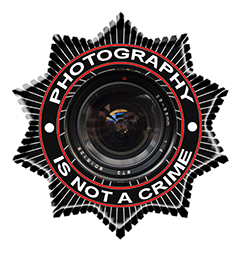It took more than a decade, but the federal government finally released nearly 200 photos depicting prisoner abuse by American soldiers during the wars in Iraq and Afghanistan.
The photos were released Friday in response to an [__ACLU lawsuit filed in 2004__](https://www.aclu.org/cases/aclu-v-department-defense) when George W. Bush was still president.
But the Department of Defense is still refusing to release an additional 1,800 photos that are likely to be even more gruesome than the ones released today – including photos depicting American soldiers sexually abusing a 73-year-old Iraqi woman.
In fact, the photos released today are described by the ACLU as [__“the most innocuous of the 2,000 that were being withheld.”__](https://www.aclu.org/blog/speak-freely/pentagon-releases-198-abuse-photos-long-running-lawsuit-what-they-dont-show-bigger)
> The photos still being withheld include those related to the case of a 73-year-old Iraqi woman detained and allegedly sexually abused and assaulted by U.S. soldiers. According to the Army report detailing the incident, the soldiers forced her to “crawl around on all-fours as a ‘large man rode’ on her,” striking her with a stick and calling her an animal. Other pictures depict an Iraqi teenager bound and standing in the headlights of a truck immediately after his mock execution staged by U.S. soldiers. Another shows the body of Muhamad Husain Kadir, an Iraqi farmer, shot dead at point-blank range by an American soldier while handcuffed.
The federal government is refusing to release the photos on the basis that it would anger terrorists.
> To justify its withholdings, the government cites a general fear that exposing the misconduct of government personnel may incite others to violence against Americans and U.S. interests. The problem with this argument is that it gives terrorists the power to determine what Americans can know about their own government. No democracy has ever been strengthened by suppressing evidence of its own crimes.
> The Abu Ghraib photos illustrated the power that visual evidence has to galvanize public attention and concern, and ultimately lead to important, albeit insufficient, efforts at accountability and reform. The same can be said about recent videos depicting police abuse, which have fed a critical national conversation about racial justice. Images make it much harder for us to turn a blind eye to injustice.
Many of the torturous acts committed by American soldiers are documented by government records maintained on a website called [__The Torture Database__](https://www.thetorturedatabase.org/search/apachesolr_search), which contains 6,000 emails, reports and other investigative documents.
Documents describing the sexual assault of the 73-year-old woman c[__an be read here__](https://www.thetorturedatabase.org/files/foia_subsite/pdfs/DODDOACID000335.pdf), along with [__the documents__](https://www.thetorturedatabase.org/files/foia_subsite/pdfs/DODDOACID005399.pdf) describing the murder of a handcuffed farmer as well as the ones [__describing the mock execution__](https://www.thetorturedatabase.org/files/foia_subsite/pdfs/DOD003109.pdf) of a teenage boy.
Click [__here to view the photos__](https://www.aclu.org/other/aclu-v-dod-198-photos-previously-certified-under-protected-national-security-documents-act) released today. Here’s a [__spreadsheet of photos__](https://www.aclu.org/files/TorturePhotos.xlsx) that still have not been released.

